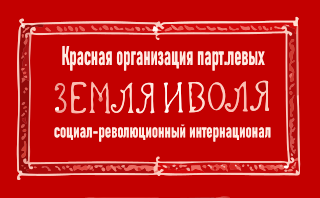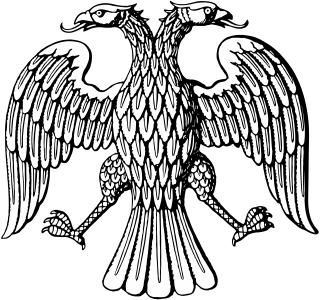
The October Revolution, also known as the Great October Socialist Revolution, October coup, Bolshevik coup, or Bolshevik revolution, was a revolution in Russia led by the Bolshevik Party of Vladimir Lenin that was a key moment in the larger Russian Revolution of 1917–1923. It was the second revolutionary change of government in Russia in 1917. It took place through an armed insurrection in Petrograd on 7 November 1917 [O.S. 25 October]. It was the precipitating event of the Russian Civil War. The initial stage of the October Revolution which involved the assault on Petrograd occurred largely without any human casualties.

The Russian Revolution was a period of political and social change in Russia, starting in 1917. This period saw Russia abolish its monarchy and adopt a socialist form of government following two successive revolutions and a civil war. The Russian Revolution can also be seen as the precursor for the other European revolutions that occurred during or in the aftermath of World War I, such as the German Revolution of 1918–1919.

The Russian Civil War was a multi-party civil war in the former Russian Empire sparked by the overthrowing of the social-democratic Russian Provisional Government in the October Revolution, as many factions vied to determine Russia's political future. It resulted in the formation of the Russian Socialist Federative Soviet Republic and later the Soviet Union in most of its territory. Its finale marked the end of the Russian Revolution, which was one of the key events of the 20th century.

The German revolution of 1918–1919, also known as the November Revolution, was an uprising started by workers and soldiers in the final days of World War I. It quickly and almost bloodlessly brought down the German Empire, then in its more violent second stage, the supporters of a parliamentary republic were victorious over those who wanted a Soviet-style council republic. The defeat of the forces of the far Left cleared the way for the establishment of the Weimar Republic. The key factors leading to the revolution were the extreme burdens suffered by the German people during the war, the economic and psychological impacts of the Empire's defeat, and the social tensions between the general populace and the aristocratic and bourgeois elite.

The Socialist Propaganda League of America (SPLA) was established in 1915, apparently by C. W. Fitzgerald of Beverly, Massachusetts. The group was a membership organization established within the ranks of the Socialist Party of America (SPA) and is best remembered as direct lineal antecedent of the Left Wing Section of the SPA and its governing National Council — the forerunner of the American Communist movement. It published a journal, The Internationalist, renamed The New International in 1917, last published in 1919.

A soviet republic, also called council republic, is a republic in which the government is formed of soviets and politics are based on soviet democracy. During the Revolutions of 1917–1923, various revolutionary workers' movements across Europe declared independence or otherwise formed governments as soviet republics. Although the term is usually associated with the Republics of the Soviet Union, it was not initially used to represent the political organisation of the Soviet Union, but merely a system of government.
Ukrainian Socialist-Revolutionary Party was a political party in Ukraine and the Russian Republic founded in April 1917, based on separate groups and circles of SRs that existed on the territory of Ukraine since 1905. The left faction of the party dissolved it in 1918 forming a new party, while the Ukrainian Socialist-Revolutionary Party was recreated in January 1919 by its moderate faction members.

Golos Truda was a Russian-language anarchist newspaper. Founded by working-class Russian expatriates in New York City in 1911, Golos Truda shifted to Petrograd during the Russian Revolution in 1917, when its editors took advantage of the general amnesty and right of return for political dissidents. There, the paper integrated itself into the anarchist labour movement, pronounced the necessity of a social revolution of and by the workers, and situated itself in opposition to the myriad of other left-wing movements.

For a number of decades after its establishment in August 1901, the Socialist Party of America produced or inspired a vast array of newspapers and magazines in an array different languages. This list of the Non-English press of the Socialist Party of America provides basic information on each title, along with links to pages dealing with specific publications in greater depth.
Ukrainian Party of Socialist-Independists was a Ukrainian political party created on December 17, 1917 in Kyiv at the Party Congress and consisted from some member of the Popular Ukrainian Party, socialist-independists, independent socialist-revolutionaries and national-democrats that united around the "Union of Ukrainian Statehood". The party's chairman was elected Oleksandr Makarenko, while the party's central committee consisted of 21 members. As many other Ukrainian parties of 1917 it seceded from the Revolutionary Ukrainian Party. The Ukrainian Party of Socialist-Independists was not numerous and in general did not play a great role in political life.

The Council of People's Commissars of the Russian Soviet Federative Socialist Republic was the government of Soviet Russia between 1917 and 1946. It was established by the Second All-Russian Congress of Soviets of Workers', Soldiers', and Peasants' Deputies on November 9, 1917 "as an interim workers' and peasants' government" under the name of the Council of People's Commissars, which was used before the adoption of the Constitution of the Russian Socialist Federative Soviet Republic of 1918.

The Russian Socialist Federation was a semi-autonomous American political organization which was part of the Socialist Party of America from 1915 until the split of the national organization into rival socialist and communist organizations in the summer of 1919. Elements of the Russian Socialist Federation became key components of both the Communist Party of America and the rival Communist Labor Party of America as "Russian Federations" within these organizations. Following the unification of these two groups in 1921, the resulting unified Russian Communist Federation gradually evolved into the so-called Russian Bureau of the Communist Party USA.

The Revolutionary Age was an American radical newspaper edited by Louis C. Fraina and published from November 1918 until August 1919. Originally the publication of Local Boston, Socialist Party, the paper evolved into the de facto national organ of the Left Wing Section of the Socialist Party which battled for control of the Socialist Party throughout the spring and summer of 1919. With the establishment of the Left Wing National Council in June 1919, the paper was moved from Boston to New York City gained status as the official voice of the nascent American communist movement. The publication was terminated in August 1919, replaced by the official organ of the new Communist Party of America, a weekly newspaper known as The Communist.
The Estonian Labour Party was a political party in Estonia. It was formed in 1919 by a merger of the Radical Socialist Party and the Social Travaillist Party, and ceased to exist in 1932, when it merged with other centrist parties to form the National Centre Party. It was a member of government coalitions between 1919 and 1925, and again from 1927 until 1931.

The All-Russian Congress of Soviets evolved from 1917 to become the supreme governing body of the Russian Soviet Federative Socialist Republic from 1918 until 1936, effectively. The 1918 Constitution of the Russian SFSR mandated that Congress shall convene at least twice a year, with the duties of defining the principles of the Soviet Constitution and ratifying peace treaties. The October Revolution ousted the provisional government of 1917, making the Congress of Soviets the sole, and supreme governing body. This Congress was not the same as the Congress of Soviets of the Soviet Union which governed the whole Soviet Union after its creation in 1922.

The Revolutions of 1917–1923 were a revolutionary wave that included political unrest and armed revolts around the world inspired by the success of the Russian Revolution and the disorder created by the aftermath of World War I. The uprisings were mainly socialist or anti-colonial in nature. Some socialist revolts failed to create lasting socialist states. The revolutions had lasting effects in shaping the future European political landscape, with for example the collapse of the German Empire and the dissolution of Austria-Hungary.

The Party of Left Socialist-Revolutionaries-Internationalists was a revolutionary socialist political party formed during the Russian Revolution.

The All Russian Constituent Assembly was a constituent assembly convened in Russia after the February Revolution of 1917. It met for 13 hours, from 4 p.m. to 5 a.m., 18–19 January [O.S. 5–6 January] 1918, whereupon it was dissolved by the Bolshevik-led All-Russian Central Executive Committee, proclaiming the Third All-Russian Congress of Soviets the new governing body of Russia.

The Mensheviks were a faction of the Marxist Russian Social Democratic Labour Party (RSDLP) which split with Vladimir Lenin's Bolshevik faction at the Second Party Congress in 1903. The Mensheviks were led by Julius Martov and Pavel Axelrod.
















